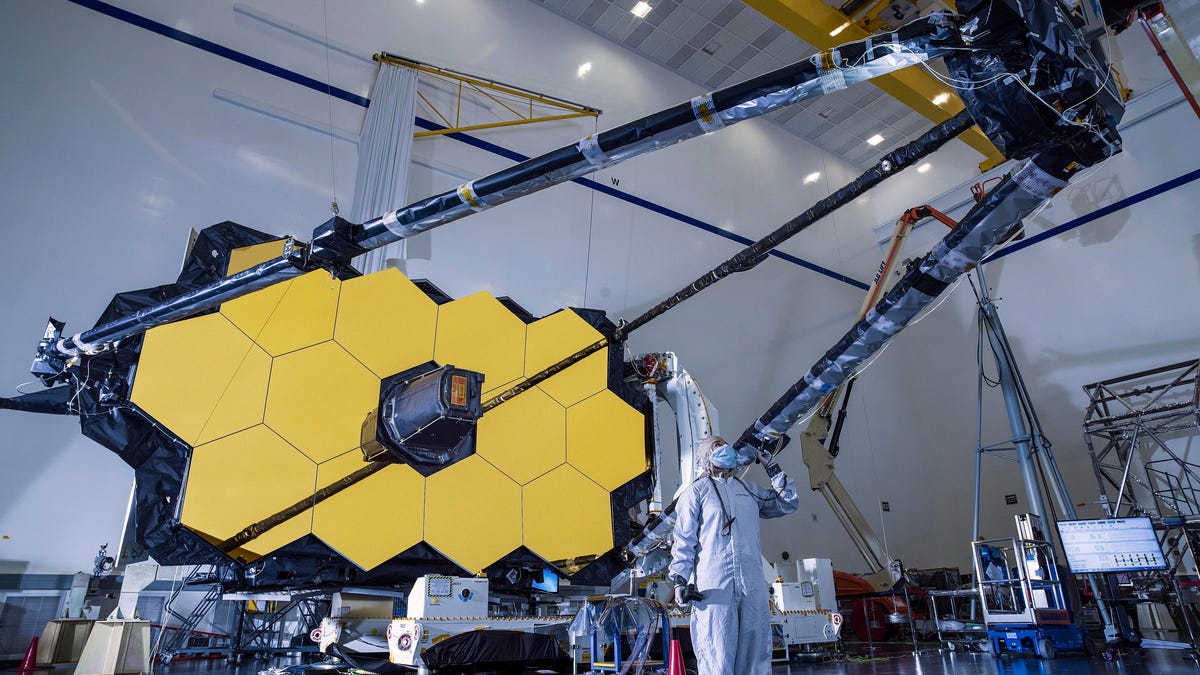See NASA's next-gen space telescope unfold like a weird Transformer
The James Webb Space Telescope may be running late, but its secondary mirror system just passed a big test.
NASA's next-generation James Webb Space Telescope is big in a lot of ways: big budget, big mirrors, big timeline, big in size. It's so big, it has to fold up parts of itself and then open them back up in space after it launches, hopefully by 2021.
NASA just tested out a critical component when it commanded the telescope to deploy the support system that holds the secondary mirror. The mirror extends out on long arms in front of the main mirrors, which sit in a honeycomb shape.
"This smaller circular mirror serves an important role in collecting light from Webb's 18 primary mirrors into a focused beam," NASA said in a statement on Tuesday. A video shows the process, and it's fascinating to watch. The white-suit-wearing engineers in the video give a sense of the telescope's massive size.
James Webb is intended to carry the torch for NASA's great space telescopes. Hubble is the most famous, but it's getting old. Webb is considerably more powerful than Hubble and is designed to study distant solar systems and delve into the history of the universe.
Webb is currently split into two major halves that will need to be connected. "The secondary mirror test represents the last large milestone before the integration of Webb into its final form as a complete observatory," NASA said.
The new telescope hasn't had a smooth ride. It's been struck with multiple delays, cost overruns and some literal loose screws. NASA is now hoping to launch it in 2021. It was originally scheduled to head to orbit in 2018.
The successful secondary mirror test is a welcome sign of forward progress for a mission that's been faced with a lot of speed bumps.


